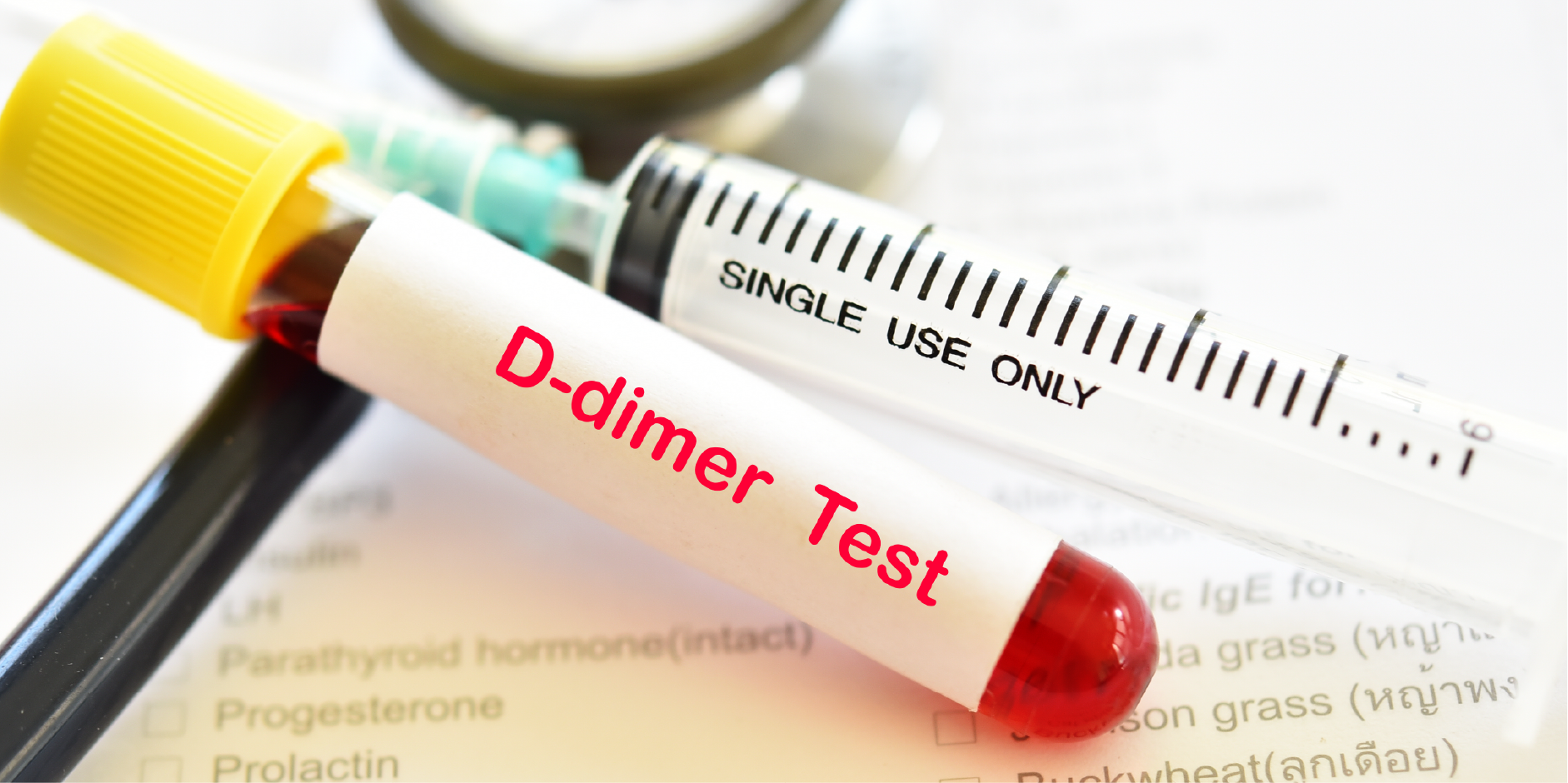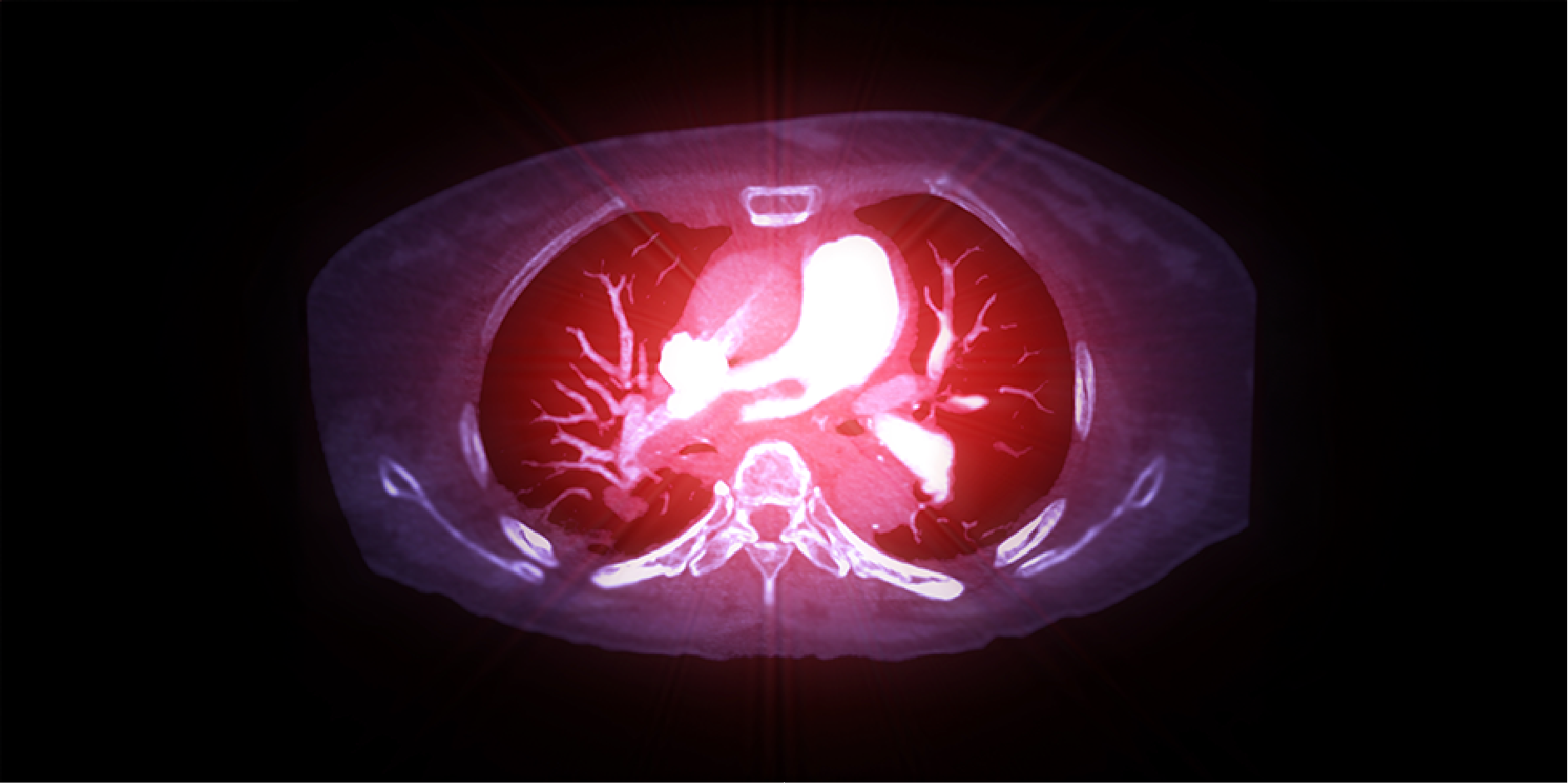Content on this page:
Content on this page:
Laboratory Tests and Ancillaries
Diagnostic tests are
indicated to assess the clinical probability of pulmonary embolism and the
general condition of the patient. Laboratory results can be normal, but some
abnormal findings increase the suspicion of pulmonary embolism.
Arterial Blood Gas (ABG)
Arterial blood gas can show hypoxemia, hypocapnia, and
widened (A-a) O2 difference.
B-type Natriuretic Peptide (BNP)
and Troponin
BNP and troponin are considered in a patient with
substantial clot burden, abnormal echocardiogram, or clinical findings
suggestive of pulmonary embolism. Elevated BNP and troponin are associated with
right ventricular strain and increased mortality even in the absence of
hemodynamic instability, especially if considering massive pulmonary embolism.
Electrocardiography (ECG)
ECG can show right axis deviation, supraventricular arrhythmia,
S1Q3T3 pattern, or P-pulmonale.
D-Dimer
D-dimer is a highly sensitive but nonspecific
screening test for the presence of pulmonary embolism. The sensitivity may be
decreased if the duration of venous thromboembolism manifestations is >2-3
days prior to testing, if the patient is on Heparin therapy, and/or with
history of recent surgical procedures or trauma. It is best used for the evaluation
of outpatients in the emergency department.
D-dimer is the recommended confirmatory test for
patients with a low clinical pretest probability and positive for pulmonary
embolism rule-out criteria.
A negative D-dimer test via any D-dimer method
(simpliRed, Vidas, or MDA) reliably excludes pulmonary embolism in patients with
low clinical probability; such patients do not require imaging for venous
thromboembolism. A negative D-dimer test using ELISA (Vidas) reliably excludes pulmonary
embolism in patients with intermediate probability. A positive D-dimer requires
further evaluation to exclude pulmonary embolism adequately; however, raised
levels of D-dimer do not confirm the presence of venous thromboembolism because
such levels are found in hospitalized patients, obstetrics, peripheral vascular
disease, cancer, and many inflammatory diseases as well as increasing age.
CV D-dimer should not be performed in those with high
clinical pretest probability. Computed tomographic pulmonary angiography (CTPA)
is recommended as the initial test for these cases; if not available, or if the
patient is unstable or has contraindications, bedside echocardiography is
recommended.
D-dimer is inappropriate for suspected venous thromboembolism with
recent surgery or trauma. These patients should proceed directly to radiologic
studies (eg duplex ultrasound or CTPA).
 Pulmonary Thromboembolism_Diagnostics 1
Pulmonary Thromboembolism_Diagnostics 1Imaging
Echocardiography
Echocardiography is the most useful initial test
which typically shows indirect signs of acute pulmonary hypertension and right
ventricular overload if acute pulmonary embolism is the cause of the hemodynamic
changes. If the patient is unstable, thrombolytic treatment or surgery can be
done based only on the compatible echocardiography findings. If the patient has
been stabilized, a definitive diagnosis should be pursued. Both lung scan,
spiral computed tomography (sCT), and bedside transesophageal echocardiography
(TEE) are usually able to confirm the diagnosis. A normal lung scan or sCT
angiogram suggests that another cause of shock should be found.
Echocardiography is useful for rapid triage in acutely ill
patients with suspected massive pulmonary embolism. It is usually reliable in differentiating
between illnesses that have radically different treatments compared to pulmonary
embolism (eg acute myocardial infarction, pericardial tamponade, infective
endocarditis, aortic dissection). It may suggest or reinforce clinical
suspicion of pulmonary embolism with the findings of right ventricular overload
and dysfunction in the presence of Doppler signs of increased pulmonary arterial
pressure. It may also definitively confirm the diagnosis of pulmonary embolism
by visualization of proximal pulmonary arterial thrombi. It has not been
confirmed if echocardiography can identify patients who will benefit from
thrombolytic therapy if they present without shock or hypotension.
Chest X-ray (CXR)
Chest X-ray may demonstrate atelectasis,
pleural-based infiltrates or effusions, or engorged central pulmonary artery
associated with a paucity of peripheral vessels.
Computed
Tomographic Pulmonary Angiography (CTPA)
CTPA is recommended
as the initial lung imaging modality for non-massive pulmonary embolism. It is
increasingly used as an adjunct or alternative to other imaging modalities and
is superior in specificity to isotope lung scanning. It enables direct
visualization of the pulmonary emboli and may provide information about
parenchymal abnormalities that might help in establishing alternative diagnoses.
It is more useful for patients with underlying cardiac and pulmonary disease.
It has a high specificity and sensitivity for central clots. The main
disadvantage of CTPA to that of conventional pulmonary angiography is that
subsegmental clot is less likely to be seen.
 Pulmonary Thromboembolism_Diagnostics 2
Pulmonary Thromboembolism_Diagnostics 2In patients with a high pretest probability, negative CTPA may not be able to exclude significant pulmonary thrombi, therefore, these cases may require further investigation. Most experts agree that a patient, in whom CTPA shows pulmonary embolism, may be treated without further tests.
Please see Further Work-up for more information.
Further Work-Up
Further work-up is recommended in patients with persistent signs and symptoms despite a negative CTPA and D-dimer test.
Venous Duplex Ultrasonography (US)
Most pulmonary emboli arise from the deep veins of the legs thus it is rational to search for a residual deep vein thrombosis in suspected pulmonary embolism patients. A normal ultrasound exam of the leg veins does not rule out pulmonary embolism. Ultrasound studies may have false positives or may detect residual abnormalities from past venous thromboembolism. The only definite positive studies under certain clinical circumstances (eg patient without a history of venous thromboembolism but has a high clinical probability of pulmonary embolism) should serve as a basis for the start of therapy. This may improve the estimation of the clinical probability of pulmonary embolism and avoid more invasive testing in patients with a negative lung imaging study.
Ventilation-Perfusion Lung Scanning (V/Q Scan)
V/Q scan is the preferred imaging study when CTPA is contraindicated. Normal or near normal lung scans are sufficient to exclude pulmonary embolism, regardless of pretest probability. Low probability scans in combination with a low pretest probability make the probability of pulmonary embolism low. High-probability scans provide the predictive power to establish the diagnosis in the context of reasonable clinical suspicion of pulmonary embolism. The presence of pulmonary vasculature occlusion of ≥50% may signify massive pulmonary embolism. Further tests should be performed in all other combinations of V/Q scan results and clinical probability.
Magnetic Resonance Angiography (MRA)
MRA appears to be promising in human and animal models. It avoids ionizing radiation but has poor sensitivity for subsegmental clots and limited access is likely to continue for several years.
Conventional Pulmonary Angiography
Conventional pulmonary angiography is historically considered the gold standard for the diagnosis of pulmonary embolism. Angiography should be reserved for patients in whom noninvasive tests remain inconclusive or are not available. The use of pulmonary angiography may also depend on the patient’s clinical status and the necessity to obtain an absolute diagnosis.
Its limitations include the requirement of expertise in performance and interpretation; being invasive; the associated risks with subsegmental clot; and the interobserver disagreement in up to ⅓ of cases.
